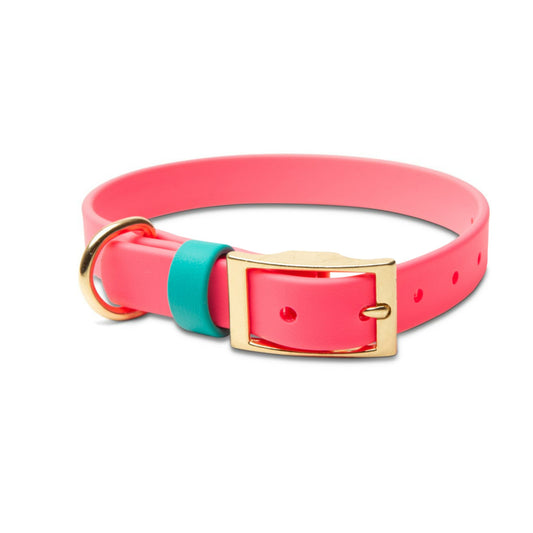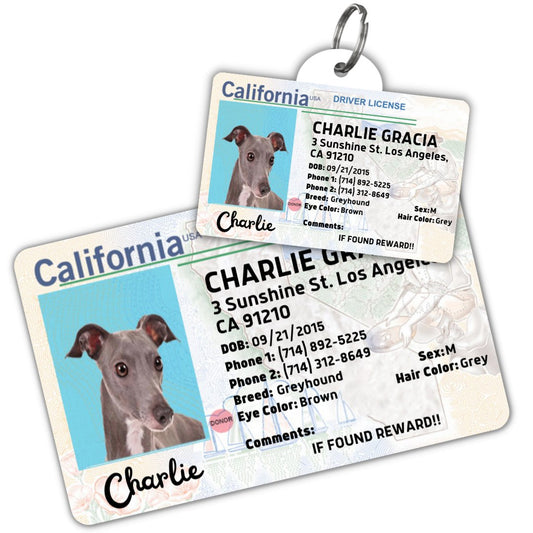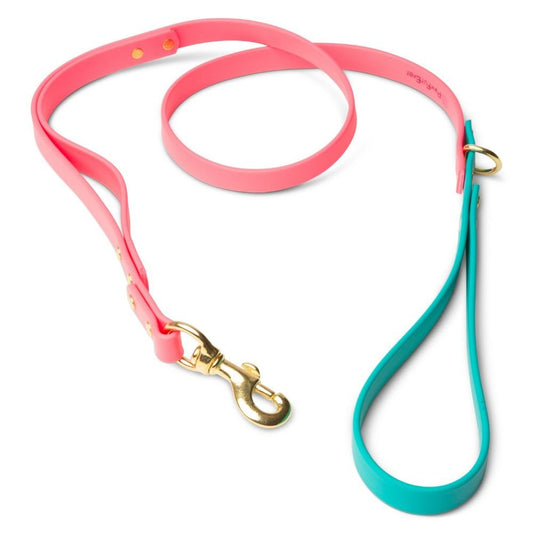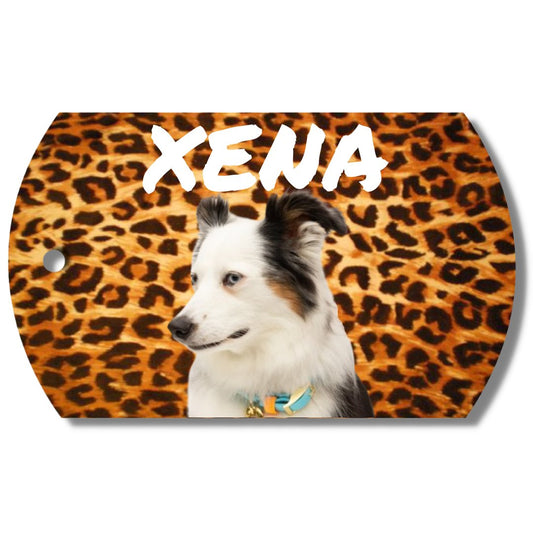
Multi-Pet Household Organization: Managing Collars, Tags, and Accessories
Managing a multi-pet household brings exponential joy,and exponential organizational challenges. When you share your home with multiple dogs, the simple task of preparing for walks transforms into complex logistics involving numerous collars, leashes, custom dog tags, and accessories that somehow always seem to tangle, disappear, or end up on the wrong dog at critical moments. Yet experienced multi-dog households demonstrate that with thoughtful systems and strategic organization, managing equipment for several pets becomes almost as simple as caring for one. The key lies in implementing customized dog tags systems, color-coding strategies, dedicated storage solutions, and maintenance routines that prevent chaos while ensuring every pet has properly fitted, clearly identified, and easily accessible gear.
The difference between smoothly functioning multi-pet households and those constantly struggling with equipment chaos often comes down to intentional organization rather than expensive solutions. Smart systems that use colour coordination, designated storage, and quality equipment from manufacturers like PawFurEver create functional frameworks that make daily pet care more efficient rather than overwhelming. Understanding the specific challenges multi-pet homes face and implementing proven solutions transforms household management from frustrating to functional.
The Unique Challenges of a Multi-Pet Organization
Before exploring solutions, acknowledging the specific problems multi-pet households face helps you understand why organization matters so critically.
Equipment Multiplication
One dog requires one collar, one leash, one set of bowls, and one toy collection. Two dogs double everything. Three or more create exponential complexity,particularly when different dogs have different needs, sizes, or activity levels requiring specialized equipment.
The sheer volume of gear requires storage systems that prevent tangles, losses, and damage. Without organization, leashes become hopelessly knotted, collars disappear when you need them, and you spend valuable time searching for the right equipment rather than enjoying time with your dogs.
Mix-Up Mayhem
In multi-dog households, equipment mix-ups cause frustration and potential problems. Grabbing the wrong-sized collar risks dogs slipping free during walks. Using the wrong leash length for specific dogs compromises control. Failing to attach proper identification to correct dogs creates safety issues.
These mix-ups particularly occur during rushed moments, such as rushing out for walks before work, managing evening routines, or responding to unexpected situations that require quick departures. Organizational systems that prevent confusion regardless of time pressure become essential.
Maintenance Complexity
One dog's collar requires occasional cleaning. Multiple dogs' equipment needs systematic maintenance schedules to ensure nothing becomes dirty, damaged, or unsafe through neglect. Without systems, items fall through the cracks: one dog's collar never gets cleaned, another's tags become illegible, and leashes develop unnoticed wear.
Colour-Coding: The Foundation of Multi-Pet Organization
The single most effective organizational strategy for multi-pet households is consistent colour-coding across all equipment for each dog.
Implementing Colour-Coded Systems
Assign each dog a specific colour that identifies all their gear:
-
Dog One: Blue collar, blue leash, blue bowls, blue toy bin
-
Dog Two: Red collar, red leash, red bowls, red toy bin
-
Dog Three: Purple collar, purple leash, purple bowls, purple toy bin
This system provides instant visual identification, eliminating guesswork. Even during rushed mornings, you grab the blue leash, knowing it belongs with the blue collar. Family members, dog sitters, and visitors can easily identify which equipment belongs to which dog.
PawFurEver's biothane collars for dogs come in multiple duo-tone colour combinations, perfect for implementing colour-coding. The vibrant, fade-resistant colours maintain visual distinction over years of use, unlike materials that fade and compromise colour-coding effectiveness.
Extending Colour-Coding Beyond Basics
Apply your color system comprehensively:
-
Storage containers in each dog's color for toys, grooming supplies, and medications
-
Food bowls and water dishes matching collar colours
-
Bedding and crates are identified with colour-coordinated accessories
-
Grooming tools marked with colored tape in each dog's designated colour
-
Medical records and files using colored folders or labels
This comprehensive approach creates foolproof systems where colour instantly identifies ownership regardless of item type.
Choosing Effective Colour Schemes
Select colours with high contras,t ensuring easy distinction:
Good combinations:
-
Blue, red, yellow
-
Purple, orange, green
-
Pink, teal, black
Poor combinations:
-
Light blue, dark blue, navy (too similar)
-
Red, orange, pink (blend visually)
-
Multiple pastel shades (lack distinctiveness)
For households with many dogs, consider secondary identification methods,patterns, symbols, or name labels,to supplement colours.
Strategic Tag Management for Multiple Dogs

Identification tags multiply with multiple pets, requiring an organised approach to ensure each dog wears current, appropriate identification.
Individualized Tag Systems
Each dog needs comprehensive identification, including:
-
Basic ID: Custom dog tags with name, primary phone number, and address
-
Municipal Licensing: Dog license tags as legally required in most jurisdictions
-
Medical Information: Tags noting critical health conditions or medications
-
Microchip Indicators: Tags showing dogs are microchipped
For multiple dogs, this creates substantial tag collections requiring organization to prevent mix-ups.
Tag Organization Solutions
-
Colour-Coded Tags: PawFurEver offers customized dog tags that allow colour-matching with collar systems. Order tags in colours corresponding to each dog's designated colour, creating instant visual identification.
-
Tag Silencers: These small devices hold multiple tags in organized stacks, reducing jingling while keeping tags separated and readable. Use different-coloured silencers that match each dog's colour system.
-
Designated Storage: When collars come off, store them in designated locations — wall hooks for each dog's colour, individual storage boxes, or drawer sections labelled with names and colours.
Keeping Tag Information Current
Multi-pet households multiply administrative tasks. Create systems ensuring all tags remain current:
Digital Calendar Reminders:
-
License renewal dates for each dog
-
Vaccination deadlines requiring updated tags
-
Microchip registration verification schedules
-
Contact information review quarterly
Central Information Sheet: Maintain a document listing each dog's information, birth dates, license numbers, microchip numbers, and vaccination dates. Update when circumstances change and keep copies in multiple locations.
Quality Engraved Dog ID Tags: Invest in deeply engraved tags from manufacturers like PawFurEver. Quality engraving resists wear far better than printed alternatives, reducing replacement frequency for information that hasn't changed.
Collar and Leash Management Systems
With multiple collars and leashes, storage and organization prevent tangles and loss.
Wall-Mounted Organization
Dedicate wall space near your primary exit door for pet equipment:
-
Individual Hooks: Mount separate hooks for each dog, spacing them to prevent leash tangling. Label hooks with names and apply colored tape matching each dog's colour scheme.
-
Combination Systems: Use multi-hook organizers that accommodate collars, leashes, and waste bag dispensers in a single, compact unit. Dedicate specific hooks to specific dogs, maintaining consistent placement.
-
Height Considerations: Arrange hooks at varying heights,smallest dogs' equipment lowest, largest dogs' highest,creating additional visual organization.
Drawer and Bin Storage
For households preferring hidden storage:
-
Labeled Drawers: Dedicate drawer sections to each dog, using dividers to create compartments for collars, leashes, grooming tools, and accessories. Label clearly with names and colors.
-
Individual Bins: Use colored plastic bins (matching each dog's color) for comprehensive equipment storage. Stack bins in accessible location allowing quick retrieval.
-
Car Storage: Maintain duplicate basic equipment for each dog in vehicle organizers,backup Biothane collars, leashes, waste bags, and portable water bowls. This ensures you're never caught without essentials during spontaneous outings.
Preventing Equipment Mix-Ups
-
Size Distinctiveness: Beyond color-coding, ensure equipment sizes appropriately match each dog. Collars and leashes sized correctly for each dog create additional identification,you won't accidentally grab the toy breed collar for your German Shepherd.
-
Consistent Placement: Always return equipment to the same locations. Consistency builds habits that function automatically during rushed moments.
-
Family Communication: Ensure all household members understand and follow organization systems. Post simple charts or guides if helpful for visitors or new family members.
Maintenance Schedules for Multiple Pets
Regular maintenance prevents equipment deterioration and safety issues.
Monthly Deep Cleaning
Once monthly, thoroughly clean all equipment:
-
Biothane Collars and Leashes: Wipe down with warm soapy water, dry completely. The waterproof, non-porous material makes this process quick, one of many reasons biothane collars for dogs excel in multi-pet households where easy maintenance matters enormously.
-
Tags: Clean engraved dog ID tags with a soft brush and mild soap, ensuring engraved information remains clearly visible. Check attachment hardware for wear.
-
Bowls and Dishes: Run through the dishwasher or hand-wash thoroughly with pet-safe sanitising solutions.
-
Storage Areas: Wipe down hooks, drawers, and bins where equipment is stored to prevent dirt accumulation.
Seasonal Equipment Rotation
Adjust equipment seasonally to match weather and activity changes:
Spring/Summer:
-
Replace winter collars with lighter options
-
Add reflective elements for longer evening walks
-
Introduce cooling accessories for hot weather
Fall/Winter:
-
Switch to collars with better visibility for darker mornings/evenings
-
Add reflective or LED accessories
-
Introduce protective gear for snow and ice
PawFurEver's durable Biothane dog collar options work year-round across all conditions, but seasonal accessories complement core equipment effectively.
Managing Multi-Dog Walking
The most challenging multi-pet organizational task is often simply leaving the house with multiple dogs.
Pre-Walk Preparation Systems
-
Designated Staging Area: Create a specific location where you prepare for walks. Assemble equipment in consistent order, first dog first, second dog second, building a routine that functions automatically.
-
Grab-and-Go Bags: Maintain pre-packed bags for each dog that include a backup collar, leash, waste bags, treats, and portable water. When travelling or taking unexpected trips, grab appropriate bags, knowing you have everything you need.
-
Collar Wearing Policies: Many multi-dog households keep collars on their dogs constantly for identification, removing them only during supervised sleep times or bathing. This ensures dogs always wear proper identification, even if they escape unexpectedly.
Walking Multiple Dogs Simultaneously
-
Leash Management: Color-coded leashes matching collar colors prevent confusion about which leash connects to which dog. When walking multiple dogs, you can quickly identify and adjust individual leashes.
-
Training Consistency: Ensure all dogs understand walking expectations. Mixed training levels complicate multi-dog walks, one dog pulling while another heels creates frustration. Address training individually before combining dogs.
-
Equipment Quality: Multi-dog walks demand reliable equipment. Leash failure while managing multiple dogs creates dangerous situations. PawFurEver's Biothane leashes provide the strength and reliability essential for multi-dog management.
Record-Keeping for Multiple Pets
Documentation multiplies with multiple pets requiring systematic record management.
Digital Organization
-
Shared Calendars: Use family calendars color-coded to each dog tracking vet appointments, grooming, training classes, and medication schedules.
-
Photo Documentation: Photograph each dog's license tags, vaccination records, and microchip information. Store in easily accessible cloud locations. Update annually or when information changes.
-
Expense Tracking: Maintain separate expense categories for each dog if budgeting matters. This reveals actual per-dog costs and helps plan for future expenses.
Physical File Systems
-
Individual Folders: Color-coded folders for each dog containing medical records, license paperwork, training certificates, and emergency contact information.
-
Emergency Information Sheets: Create one-page summaries for each dog listing critical information,medical conditions, medications, feeding instructions, behavior notes. Keep copies in multiple locations and with emergency contacts.
Shopping and Inventory Management
Multiple pets require strategic shopping approaches, preventing both shortages and wasteful overbuying.
Inventory Tracking
-
Minimum Levels: Establish minimum quantities for consumables, food, treats, waste bags, and medications—Reorder when reaching minimums rather than running completely out.
-
Centralized Lists: Maintain shopping lists in easily accessible locations. Family members note items as supplies diminish rather than relying on memory.
-
Bulk Buying Strategy: Many multi-pet supplies benefit from bulk purchasing, food, treats, and waste bags. However, ensure storage capacity exists and products won't expire before use.
Equipment Replacement Planning
-
Lifespan Awareness: Know typical lifespans for equipment. Quality biothane collars for dogs last 7-10+ years, while cheaper alternatives require annual replacement. Plan budgets accordingly.
-
Proactive Replacement: Replace equipment showing wear before failure occurs. With multiple dogs, losing control of one due to equipment failure creates hazards affecting all dogs.
The PawFurEver Advantage for Multi-Dog Households
Managing multiple dogs' equipment becomes significantly easier when you invest in quality gear from manufacturers understanding pet owners' genuine needs. PawFurEver's handcrafted products deliver advantages particularly valuable for multi-pet households:
-
Color Options: Multiple duo-tone combinations support comprehensive color-coding systems across all dogs.
-
Durability: Biothane collars lasting 10+ years mean buying once per dog rather than constant replacement cycles multiplied across all pets.
-
Easy Maintenance: Non-porous, waterproof materials wipe clean in seconds, critical when managing equipment for multiple animals.
-
Customization: Customized dog tags in various colors and designs allow personalization distinguishing each dog's identification clearly.
-
Consistent Quality: When all your pets use equipment from the same high-quality manufacturer, you know exactly what to expect from every piece, no variables from mixing brands of varying quality.
Conclusion
Multi-pet household organization doesn't require complex solutions or expensive systems,just thoughtful implementation of proven strategies. Color-coding using vibrant Biothane dog collars and leashes, systematic tag management with quality engraved dog ID tags, designated storage preventing tangles and loss, regular maintenance schedules ensuring safety, and strategic shopping approaches create frameworks transforming chaos into manageable routines.
The investment in quality equipment from manufacturers like PawFurEver who understand what multi-pet households need provides foundation for successful organization. When equipment reliably performs its intended function, lasts years without degradation, and works consistently across all conditions, the organizational systems built around it function smoothly. Your time with multiple dogs becomes less about managing logistics and more about enjoying the extraordinary companionship that multi-pet households provide.
Frequently Asked Questions
1. How can I keep multiple dogs' collars and leashes from getting mixed up?
Implement comprehensive color-coding,assign each dog a specific color for their Biothane dog collar, leash, tags, bowls, and accessories. Use color-matched customized dog tags and store equipment on designated, color-labeled hooks. This visual system prevents mix-ups even during rushed moments.
2. What's the best way to organize dog tags for multiple pets?
Use color-coded custom dog tags matching each dog's collar color, tag silencers in corresponding colors to reduce jingling, and store collars with tags attached on individual hooks labeled with dog names. Order quality engraved dog ID tags from PawFurEver in colors supporting your organization system.
3. Should all my dogs wear the same type of collar and leash?
Yes, standardizing on quality materials like biothane collars for dogs simplifies maintenance and ensures consistent performance. PawFurEver's Biothane collars work across all dog sizes while the duo-tone color options support effective color-coding distinguishing each dog's equipment.
4. How often should I replace dog license tags and ID tags for multiple dogs?
License tags require annual replacement per legal requirements. Quality engraved dog ID tags from PawFurEver last 5-10+ years; replace only when information changes or the engraving becomes difficult to read. Deep engraving resists wear far better than printed tags, requiring annual replacement.
5. What's the most critical organizational system for multi-pet households?
Consistent color-coding across all equipment for each dog is the single most effective strategy. Combined with designated storage locations and quality equipment that lasts years, color-coding creates foolproof systems, preventing mix-ups and making multi-dog management efficient.





